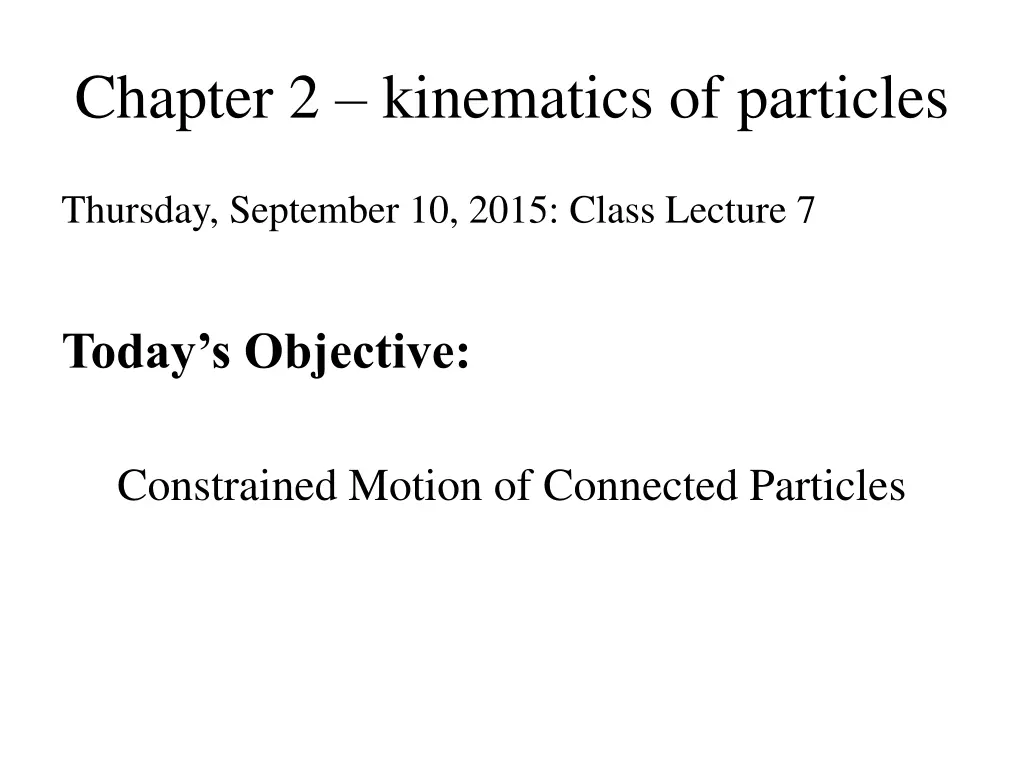
Kinematics of Particles: Constrained Motion Analysis and Problem Scenarios
Explore the concept of constrained motion analysis of connected particles through inflexible cords, analyzing dependent motion and solving problems related to cable dynamics and velocity requirements. Dive into examples to understand the relationship between particle motions and cord lengths in different scenarios.
Download Presentation

Please find below an Image/Link to download the presentation.
The content on the website is provided AS IS for your information and personal use only. It may not be sold, licensed, or shared on other websites without obtaining consent from the author. If you encounter any issues during the download, it is possible that the publisher has removed the file from their server.
You are allowed to download the files provided on this website for personal or commercial use, subject to the condition that they are used lawfully. All files are the property of their respective owners.
The content on the website is provided AS IS for your information and personal use only. It may not be sold, licensed, or shared on other websites without obtaining consent from the author.
E N D
Presentation Transcript
Chapter 2 kinematics of particles Thursday, September 10, 2015: Class Lecture 7 Today s Objective: Constrained Motion of Connected Particles
Dependent Motion Analysis of Two Particles Motion of block B depends on the motion of block A They are interconnected by inflexible cords. For motion analysis, the total length of the cord is calculated from datum planes, established arbitrarily. The direction of motion away from the datum is considered positive, and vice versa. The position of the particles is related by the total length of the cord.
Dependent Motion Analysis of Two Particles A more complicated example: Blacks A and B move along x and y directions. Need two different datum, one each for x and y directions The motion of the particles is related by the cord length. When B moves downward (+ sB), A moves to the left (- sB) with twice the motion.
Problem 2/211 pp 102 Given: Cable wraps at 320 mm/s Req: Vertical rise of the weight W in 5 sec.
Problem 2/226 pp105 Given: vAto the right Req: vB
